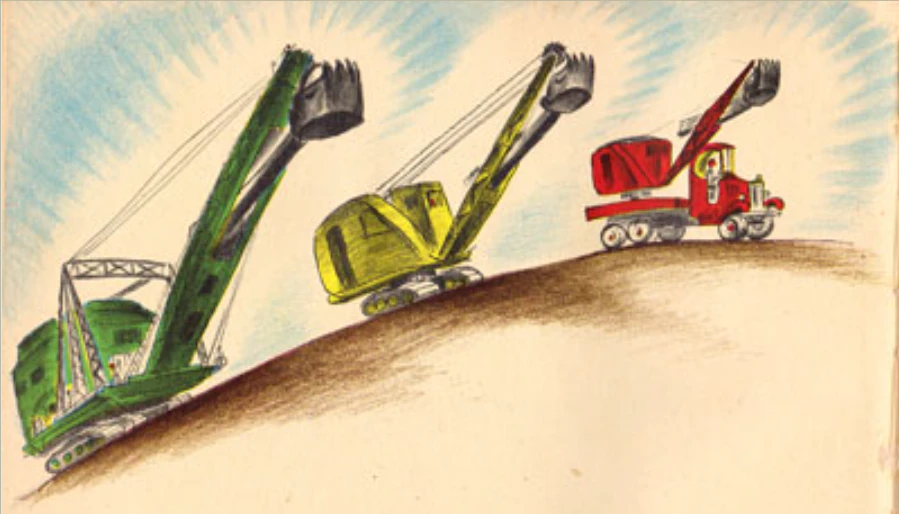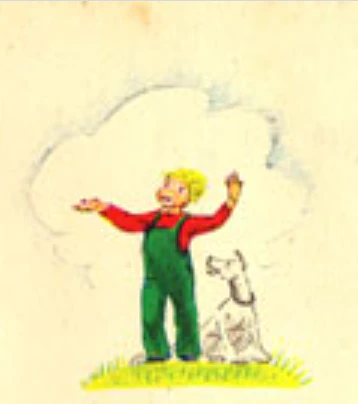PvP v PvE
This post originally appeared on my blog, because it features Longtermism and Ethics, a Call-to-Action! and The Human Spirit! But the fellows at tis.so said “praise be, we finally have a pvp/pve intro post!” So you may wade through some Human Spirit!, but you’ll find frames and interaction here commingled.
I get ‘accused’ of being exceptionally credulous, straightforward, and non-torquey1 in conversation on a somewhat regular basis; and when I ask “why though?” the response is “probably because your job is PvE instead of PvP.” And as we chew through the implications of a PvE mindset—where instead of viewing strategic interactions as person vs person, I view them as ‘me vs the universe hiding secrets’— most people come around to “and what if that’s good?”
Person vs Person, or Person vs Environment
When the primary interactions in your life are person vs person, you become accustomed to your triumph being at someone else’s cost, your achievement being negated by someone else’s loss. The situations in your world are zero-sum.
When the primary interactions in your life are person vs environment, that constraint isn’t there. When your sphere of influence is your own farm field, your excellence doesn’t come at the cost of your neighbor. And indeed, both in ‘midwestern farmer stereotype’ and in my observation, one of the most popular topics among farmers (after the weather) is “how are you going to do it better next year?” And they respond, candidly and honestly. And they learn from each other. They might all be selling the same product, but they do not feel like competitors.
This wasn’t remarkable to me until I worked outside of ag, and I found that “what are you doing to get better?” could be considered prying; and that answering might be discouraged as diluting competitive advantage. Solutions developed in a PvP, zero-sum mindset result in neutral or anti-social emergent outcomes: secrecy/dishonesty, focus on maintaining a delta between oneself and one’s competitors, considering peers as threats. Solutions developed in a PvE, non-zero-sum mindset produce neutral or pro-social emergent outcomes: knowledge transfer, exploration of waste that can be removed from systems, considering peers as allies, unlocking the universe’s secrets.
Why is PvP popular?
Some things just are zero-sum. There’s only so much water in the Colorado River. The developer can only hire one concrete company to pour the foundation for a new building. A hospital only needs one software provider. Someone will get hired, some company will get the contract—but somebody goes home empty-handed, and somebody’s dry.

Burton, Virginia Lee. Mike Mulligan and His Steam Shovel. 1939.
If 499 situations were zero-sum, it would be natural to prepare yourself for the 500th to be, too. But what if you noticed that people were resigning themselves to a zero-sum frame more often than they needed to?
Converting PvP to PvE: An Example
There are in fact lots of situations that appear PvP at a quick glance, but which can be reformulated to be PvE—or at least, to result in outcomes where both participants get some benefit.
This isn’t true of all interactions—sometimes there is a limited resource, and someone will lose. Often, though, there are interactions that appear zero-sum at first blush.
A farmer is buying seed corn for the spring. The farmer wants a low price, the seedsman wants a high price. This looks win-lose, right? And on a short timescale, it is.
But suppose you’re creative, and you’re in it for the long haul. You look at the environment the people are operating in. The farmer is thinking “I wish I could get the variety I want, at the quality I want, for cheaper.” And a seedsman is thinking “I wish I could know what my customers wanted 18 months in advance2, so I could spin up production of the popular hybrids and not have produced excess seed for the unpopular hybrids.” Now our farmer and our seedsman can meet in advance, and lock in payment for future seed. The farmer can have a lower cost in exchange for the information he had anyway, and a commitment he is willing to make. The seedsman can tolerate getting a lower price, because she has less waste in her production system and fewer unwanted boxes sitting in her inventory. The farmer and the seedsman can tweak their environment to mutual benefit—the ‘loser’ was the waste generated by opaque demand—this was not zero-sum at all.
I use an ag example, but no matter the industry, there is no shortage of situations that could be solved to mutual benefit, but are misidentified as zero sum and solved with a winner and a loser. And what a waste that is.
Developing PvE Mindset
PvE thinking results in better outcomes across all areas it is applied to. My hypothesis is: the easiest way to habituate yourself to PvE thinking is to mostly solve problems that are only and obviously PvE. If no other person is involved, they can’t be losing. Start a garden, raise an animal, build yourself a woodshed. Build yourself a bookshelf, design a layout for your kitchen that saves you steps, practice changing a flat bike tire as quickly as you can. If you find yourself in a lot of PvP at work, when you’re at home, see if you can’t identify and practice solving problems in which nobody stands to lose.
Best of all (my hypothesis goes) is to start a person on PvE problems when they’re young. When most of a kid’s hours are spent in school or even sports, there’s inherent jockeying for the limited resources of attention, status, or being a starting player on the team. Replacing (or at least balancing) these with formative experiences of “how can you pull this weed and get the whole root out?” “How can we keep this pipe from rusting after we bury it?” “Can we think of a way to save the chickens from standing in their own food trough?” will result (or at least, they did for me) in adults who are straightforward, creative, and solution-oriented.
I don’t mean to say “growing up on a farm” is the only way to develop PvE mindset. (If that were the case, I wouldn’t be bothering to write this post!) Rather, I have met ‘city kids’ with PvE and ‘city kids’ with PvP. But, every farmkid I’ve ever met has led with PvE. Given the results of this natural experiment, my hope is to contemplate what it is about farm life that encourages PvE—and to discuss the tools that might make this mindset the prevailing way of living, no matter where formative experiences are had.
The creative, solution-oriented mindset described as PvE is one of the sharpest differences I observe between people who grew up near agriculture, and those who did not. Finding ways to develop this mindset in all people, and especially in children, should be one of the top priorities of longtermists, and of all who champion the human race.

Burton, Virginia Lee. Mike Mulligan and His Steam Shovel. 1939,
Using ‘torque’ in the ‘twist the stick’ sense: “what is important with torque utterances is that they diagnose, and attempt to correct, a perceived discursive imbalance: because decision-makers’ perceptions or beliefs are already biased in one direction, they must be de-biased through the presentation of a biased picture in some contrary direction. This tit-for-tat, corrective approach to messaging can erode audience trust in the message source, but also appears more effective at mobilizing partisan enthusiasms.”↩︎
Most seed production for the US market takes advantage of the fact that, if you use both the southern and the northern hemisphere, you can fit two growing seasons into one year. When a hybrid is selected for mass production, its progenitors are planted in the US and harvested with careful quality control. The mother line and father line are shipped to South America, where they will be planted in rows. (ie 4 rows of mother, 1 row of father, repeat.) The pollen-producing tassels are clipped off the mother corns so that (ideally) only pollen from the father corn is able to pollinate the silks of the mother corn. In the fall, the mother plants are harvested, and their seed is shipped to North America for the spring planting season. (The inverse is also true—when you see busloads of 8th graders in eastern Nebraska detassling the tassels the first-pass robots left behind—the seed being produced on those plants will be sent to South America.) Once harvested, and depending on storage conditions, corn seed will have tolerable germination for up to 5 years (but once it goes off condition, it goes off quickly). So a seedsman has a large capital investment already made, by the time she’s got seed corn in inventory to sell.↩︎